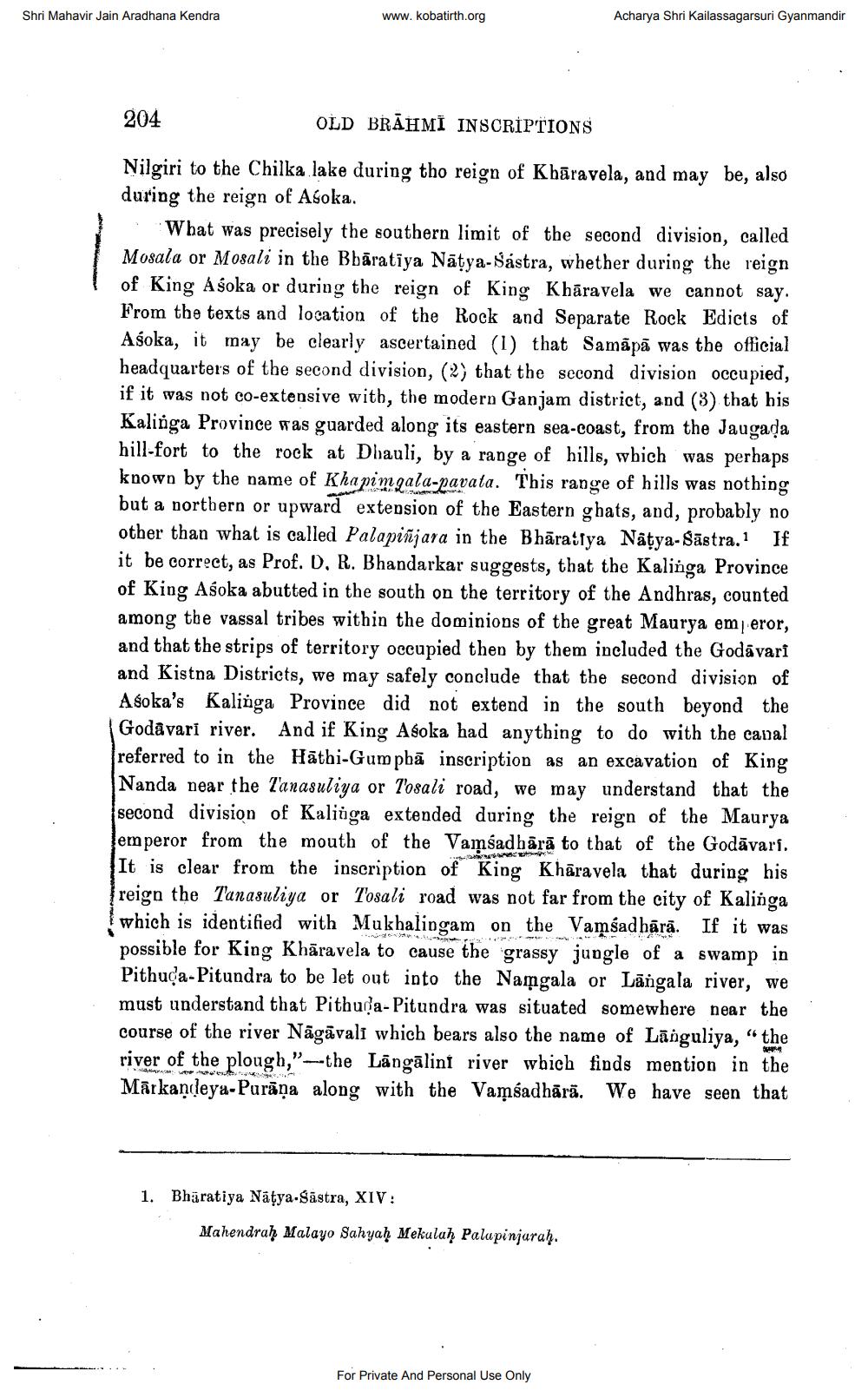________________
Shri Mahavir Jain Aradhana Kendra
www.kobatirth.org
Acharya Shri Kailassagarsuri Gyanmandir
204
OLD BRĀHMĪ INSCRIPTIONS
Nilgiri to the Chilka lake during tho reign of Khāravela, and may be, also during the reign of Asoka.
What was precisely the southern limit of the second division, called Mosala or Mosali in the Bbāratiya Nātya-Sastra, whether during the reign of King Aśoka or during the reign of King Khāravela we cannot say. From the texts and location of the Rock and Separate Rock Edicts of Asoka, it may be clearly ascertained (1) that Samāpā was the official headquarters of the second division, (2) that the second division occupied, if it was not co-extensive with, the modern Ganjam district, and (3) that his Kalinga Province was guarded along its eastern sea-coast, from the Jaugada hill-fort to the rock at Dhauli, by a range of hills, which was perhaps known by the name of Khapimgala-pavata. This range of hills was nothing but a northern or upward extension of the Eastern ghats, and, probably no other than what is called Palapiñjara in the Bhārafya Natya-Šāstra.? If it be correct, as Prof. D, R. Bhandarkar suggests, that the Kalinga Province of King Asoka abutted in the south on the territory of the Andhras, counted among the vassal tribes within the dominions of the great Maurya emeror, and that the strips of territory occupied then by them included the Godavari and Kistna Districts, we may safely conclude that the second division of Asoka's Kalinga Province did not extend in the south beyond the Godavari river. And if King Asoka had anything to do with the canal referred to in the Hāthi-Gumpbā inscription as an excavation of King Nanda near the Tanasuliya or Tosali road, we may understand that the second division of Kalinga extended during the reign of the Maurya emperor from the mouth of the Vamsadbārā to that of the Godāvars. It is clear from the inscription of King Khāravela that during his reign the Tanasuliya or Tosali road was not far from the city of Kalinga which is identified with Mukhalingam on the Vamśadhārā. If it was possible for King Khāravela to cause the grassy jungle of a swamp in Pithuca-Pitundra to be let out into the Namgala or Lāngala river, we must understand that Pithuda-Pitundra was situated somewhere near the course of the river Nāgāvali which bears also the name of Länguliya, "the river of the plough," -- the Lāngālint river which finds mention in the Mārkandleya-Purāna along with the Vaņģadhārā. We have seen that
WM
1. Bharatiya Națya-Šāstra, XIV:
Mahendrah Malayo Sahyah Mekulah Palapinjarah.
For Private And Personal Use Only




